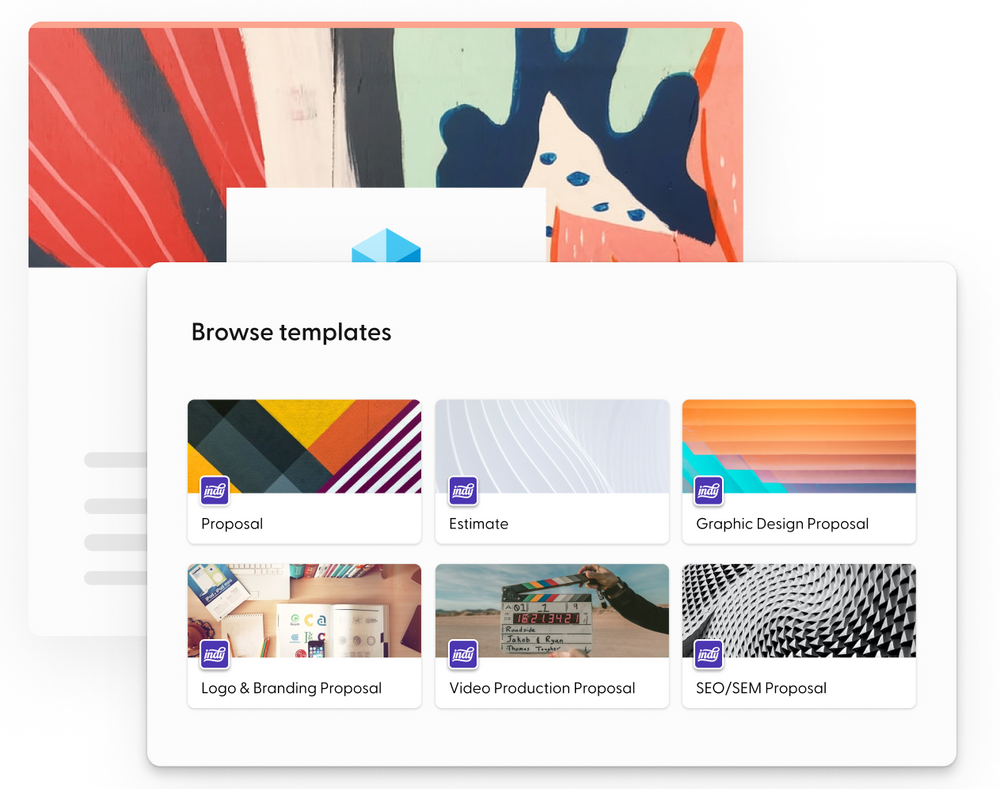Everyone knows that musicians are artists - not accountants. But unless you have a professional business manager on your side, you have to do a lot of your own admin, even if it's not your strongest suit. That includes sending the all-important final invoice to your clients after a gig.
Musician invoices aren't all that different from anyone else's, so it's fairly easy to find an invoice template online. Just make sure it contains all of the vital information you need to get paid! Let's take a closer look at a musician invoice template and what professional invoices should include.
What Is a Musician Invoice?
An invoice is a commercial document that details a transaction between a client and a seller. It serves as a request for payment for goods or services provided by the seller to the buyer. In simple terms, an invoice is a bill that outlines the details of a business transaction. Invoices are essential for both the seller and the buyer as they provide a record of the transaction, facilitate proper accounting, and serve as evidence of the business exchange. They are used in various industries (including the music industry) and are crucial for financial management and tax purposes.
Creating a professional invoice is very important. If your invoice doesn't have all of the information the client needs, it can delay your payment considerably. Your invoice is also an extension of your brand - a professional invoice makes a great impression.
What Should You Include in Your Musician Invoice?
You can use an invoice generator or download a music invoice template online, but you have to make sure that any customizable invoice template you choose has all of the necessary fields so you can get paid quickly and easily. You should also ensure that your invoice is easy to read. This includes:
Invoice number
This is a unique identifier assigned to each invoice for tracking and reference purposes. The invoice number helps both the seller and the buyer keep track of their transactions and makes it easier to search for and manage specific invoices in their records. A systematic numbering system is often used to ensure that each invoice is given a distinct and sequential number, reducing the risk of duplicate or missing invoices.
Date
The date on the invoice indicates when it was issued or generated. It is essential for determining payment due dates, tracking the timeline of the transaction, and for record-keeping purposes. The date also helps to establish the validity of the invoice and ensures that both parties are aware of the exact date the transaction occurred.
Seller's information
This section of the invoice includes the name, address, and contact details of the seller or the business providing the goods or services. It is essential for the buyer to have accurate seller information to reach out in case of any queries or concerns regarding the transaction. Additionally, the seller's tax identification number may be included on the invoice for tax purposes, especially in regions where it is required for tax reporting.
Client's information
The client's information includes their name, address, and contact details. It ensures that the invoice is sent to the correct recipient and provides the necessary information for the seller to identify their customer and the transaction associated with the invoice. This information is also crucial for the client's accounting and record-keeping processes.
Itemized list
The itemized list is a breakdown of the goods or services provided by the seller. For a musician, this might include the time performing the gig, setting up prior to the gig, and any extras you've supplied that the client agreed to pay for beforehand, e.g., a sound engineer, lighting, etc.
Total amount due
The total amount due is the sum of all the line items listed in the itemized section. It includes the subtotal of all services provided, any applicable taxes (such as sales tax or value-added tax), and any additional charges like travel costs or discounts. The total amount due represents the final amount that the buyer needs to pay to settle the invoice.
Payment terms
Payment terms outline the agreed-upon conditions for payment. They typically include the due date, which specifies when the payment must be made. Other aspects of payment terms may include accepted payment methods (e.g., credit card, bank transfer, etc.), any applicable early payment discounts or late payment penalties, and details about how to handle disputes or issues related to the payment.
Terms and conditions
In some cases, the invoice may include additional contractual terms and conditions that apply to the transaction. These terms can cover various aspects of the transaction, such as warranties, return policies, liability limitations, and other legal provisions that govern the business relationship between the buyer and the seller. Including terms and conditions on the invoice helps ensure that both parties are aware of and agree to the specific terms of the transaction.
Payment instruction
Payment instructions provide the necessary details for the buyer to remit payment to the seller. This section typically includes information such as your bank account details (for bank transfers), mailing address (for checks), or online payment instructions. Clear and accurate payment instructions help avoid payment delays or errors and facilitate a smooth payment process.
When Should You Send Your Invoice?
As a musician or freelance artist, there's no right or wrong time to send an invoice. Each client or venue may have a different policy. If they don't, consider these options:
Before the performance
If you have a contract or agreement with the client that specifies you will be paid in advance or before the performance, you should send the invoice before the scheduled event. This approach is common for private gigs, small events, or when dealing with new or unestablished clients.
After the performance
In many cases, musicians send their invoices after the performance has taken place. This is especially true for performances at larger venues, corporate events, or when working with clients who are known for their reliable payment practices. Sending the invoice after the event can be appropriate if you have an established relationship with the client and trust that they will honor the payment agreement.
In stages
For longer or more complex projects, such as recording an album or providing ongoing music services, you might consider sending partial invoices in stages. This approach allows you to receive payments throughout the project rather than waiting until the end.
Key Considerations When Sending an Invoice
There are a few more things to keep in mind when you invoice:
Net payment terms
Regardless of when you send the invoice, it's essential to specify the payment terms clearly. "Net 30" is a common term, which means the payment is due within 30 days from the invoice date. However, you can choose different terms, such as "Net 15" or "Due upon receipt," depending on your preferences and the agreement with the client.
Follow up
After sending the invoice, it's a good practice to follow up with the client if you don't receive a payment within the agreed-upon timeframe. Sending a polite reminder can help ensure that your payment is processed promptly.
Digital or physical invoice
Consider whether to send a digital invoice via email or a physical copy by mail. Digital invoices are more common these days due to their convenience and speed. However, if you have a preference or your client requests a physical copy, be sure to accommodate their needs.
Remember, it's essential to communicate clearly with your clients regarding payment terms and when they can expect to receive the invoice. Having a written contract or agreement that outlines payment details can help prevent misunderstandings and ensure a smooth payment process. Always maintain a professional and respectful approach when discussing payment matters with your clients.
How Can Indy Help?
Some of the best invoice templates can be online, for free! You can find a range of ready-made invoice templates on Indy for nearly any industry. You can even stay on top of your invoices using Indy's invoice tool. This doesn't just give you a free template; it actually manages the entire invoicing process from beginning to end. You can manage your proposal, invoice, follow-ups, and payment from the same platform.
With no additional fees for online payments and global currency support, Indy's invoicing software helps musicians get paid faster and maintain a professional image in their business dealings.
Just let Indy take care of the admin while you focus on the music. Get started today for free!
Wrapping Up
Managing administrative tasks, such as invoicing, may not be a musician's forte, but it is a crucial aspect of their business. A professional invoice not only ensures timely payment but also reflects the musician's brand identity and leaves a positive impression on clients. By including essential details like invoice numbers, dates, seller and client information, an itemized list of services, the total amount due, payment terms, and payment instructions, musicians can streamline their billing process and avoid payment delays.
With ready-made templates and customization options, you can create professional invoices that align with your brand identity in minutes. Indy supports various payment options, including credit cards, checks, and wire transfers, enabling clients to pay quickly and securely. Recurring invoices automate billing for regular clients, ensuring a steady cash flow without manual intervention. Try it out now for free!




